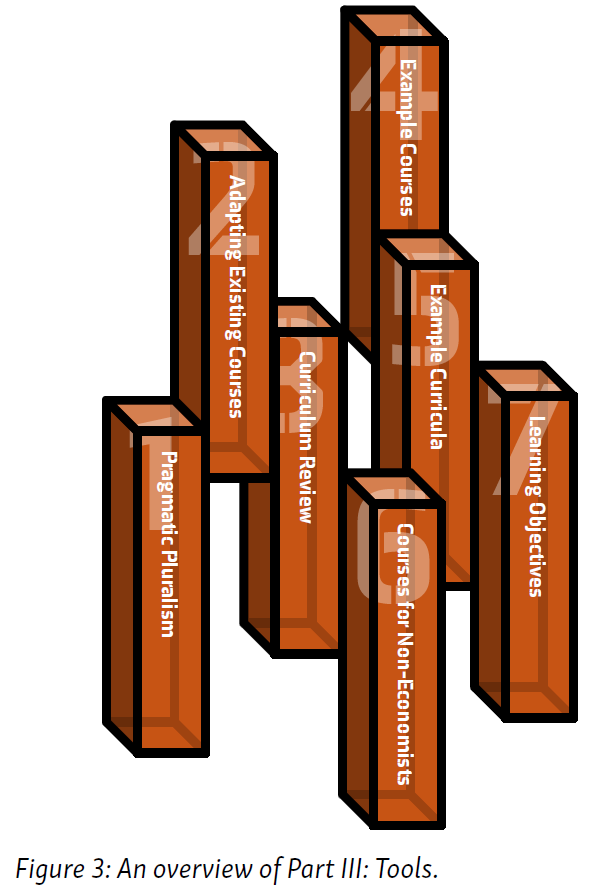Economy Studies is more than a book. It contains several practical tools to get started on curriculum change today.
While the rest of this book mixes practical advice with elements of philosophy, ideas, topics, teaching materials, considerations and overviews, this section is exclusively about putting everything into practice.
If you find the prospect of pluralism daunting, because there is so much material out there, start with Tool 1: Pragmatic Pluralism. That chapter provides key insights and ideas for thirteen core topics in economics, organised by selecting the most relevant theoretical approaches per topic and contrasting them with each other. It also suggests teaching materials.
If you are looking to modify an existing course, see Tool 2: Adapting Existing Courses, where we offer ready-to-use sets of material to broaden courses such as Micro, Macro, Public Economics or Finance.
Are you working with an existing curriculum and do you want to quickly identify potential gaps and come to concrete recommendations for improvement? Tool 3: Curriculum Review may be useful.
Do you want to see some examples of courses, or even complete programmes, that have been designed using the Economy Studies building blocks and principles? See Tool 4: Example Courses and Tool 5: Example Curricula.
Whilst the focus of this book is on educating future economists through academic programmes, Tool 6: Courses for Non-Economists provides a limited package of core economic ideas that may be useful for secondary school economics programmes, professional education or in an academic minor for students of other disciplines.
If you are working to rethink an economics programme from the ground up, based on the question ‘What do the students need to know to be prepared for their future societal roles?’ turn to Tool 7: Learning Objectives.


